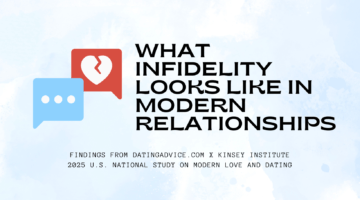Who’s Into Polyamory? A Demographic Comparison of Polyamorists and Monogamists
July 24, 2019 by Justin Lehmiller
Polyamory is a concept that different people define in different ways, but common to most definitions is the capacity to develop more than one emotionally close relationship at the same time with the consent of everyone involved. Public interest in polyamory is on the rise and there’s a growing amount of research on the subject, too. However, we still don’t know all that much about who is actually practicing polyamory.
Polyamorists tend to be stereotyped and portrayed in the media as young, wealthy, White liberals—in other words, they tend to be seen as a pretty homogeneous group. But is that actually the case? We sought to answer this question in a recent study just published in the Journal of Sex Research.
A few years, back some of my colleagues and I conducted a massive survey of people in polyamorous relationships. In fact, we surveyed more than 3,500 polyamorists in total! We have published a few papers based on these data so far (which you can learn more about here), but one of the things we wanted to explore in our most recent paper was how the demographic backgrounds of polyamorists compared to those of monogamists.
In order to accomplish this, we collected a separate sample of more than 1,300 people in monogamous relationships. For purposes of this paper, we limited our comparisons only to those folks who were from the United States because a number of our demographic questions only applied to US participants (e.g., annual income in US dollars, political party affiliation, etc.).
Overall, we found that polyamorists were a far more diverse group than were monogamists. For instance, while only 1% of monogamists reported non-binary gender identities, 7% of polyamorists did. Similarly, polyamorists were more than twice as likely to report a bisexual identity, and more than five times as likely to report a pansexual identity. Interestingly, however, the percentage of people who identified as gay or lesbian did not differ based on relationship type.
In terms of religious background, polyamorists were less likely to identify as Christian, but more likely to identify as atheist and to report religious identities outside of the dominant world religions. In addition, in terms of political background, polyamorists were less likely to identify as both Republican and Democrat, but more likely to identify as Libertarian, members of the Green party, and members of other political groups.
When it came to age, polyamorists and monogamists did not differ—both groups were age 35 on average. Also, the vast majority of both groups were White. The groups didn’t differ in terms of race or ethnicity, except that polyamorists were more likely to identify as Native American. Lastly, in terms of income, polyamorists were more likely to report earning less than $40,000/year compared to monogamists.
Across the board, we found that, compared to monogamists, polyamorists were more likely to select the “other” option whenever it was provided. This suggests that polyamorists tend to be more non-conformist in general; however, we can’t say whether that’s because some level of non-conformity predisposes people to polyamory, or whether being polyamorous predisposes people to be less conformist in other ways.
While our results do not come from representative samples, they suggest that the stereotype of polyamorists as young, White, wealthy liberals doesn’t necessarily match up with reality. Indeed, compared to monogamists, polyamorists were not any younger, Whiter, wealthier, or more likely to identify with the Democratic party.
In sum, polyamorists appear to be more diverse than they’re portrayed in the media. They also seem to be non-conformists in several ways, not just in the way they structure and approach their relationships.
Want to learn more about Sex and Psychology ? Click here for previous articles or follow the blog on Facebook (facebook.com/psychologyofsex), Twitter (@JustinLehmiller), or Reddit (reddit.com/r/psychologyofsex) to receive updates. You can also follow Dr. Lehmiller on YouTube and Instagram.
To learn more about this research, see:Balzarini, R. N., Dharma, C., Kohut, T., Holmes, B. M., Campbell, L., Lehmiller, J. J., & Harman, J. J. (2019). Demographic comparison of American individuals in polyamorous and monogamous relationships. The Journal of Sex Research, 56(6), 681-694.
Image Source: 123RF/Dmitriy Shironosov
You Might Also Like:

Dr. Justin Lehmiller
Founder & Owner of Sex and PsychologyDr. Justin Lehmiller is a social psychologist and Research Fellow at The Kinsey Institute. He runs the Sex and Psychology blog and podcast and is author of the popular book Tell Me What You Want. Dr. Lehmiller is an award-winning educator, and a prolific researcher who has published more than 50 academic works.
Read full bio >


